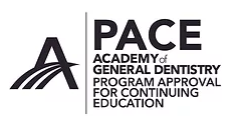
MIT Course Description:
Mentorship and Implant Training (MIT) encompasses an online and on-demand component to cover the didactic content. Watch the recorded lessons Anytime and Anywhere. In-person hands-on training is included with the course fee, as well as a 12 month mentorship to support implementation of implant treatment into your practice. Several hands-on locations and dates are available for your convenience.
Course mentorship:
Prosthetic Curriculum:
Dr. David Powell DMD, Msc(Prostho), FRCD(C)
Dr. Jonathan Ng BMedSc, DDS, MSc, Dip Pros, FRCD(C)
Surgical Curriculum:
Dr. Lesley David DDS, Dip OMFS, FRCD(C)
Dr. Avi Shelemay DDS, MSc(Perio), FRCD(C)
Surgical Curriculum
1. Prior to surgery:
A. The patient consultation appointment
B. Review of medical history
C. Examination
D. Records
E. Diagnosis and treatment planning
F. Checklist
2. Day of surgery:
A. Room setup and preparation
B. Patient setup
C. The surgical procedure
3. Post-surgery:
A. Post-operative instructions
B. Management of complications
C. Maintenance of dental implants
D. Parameters for success
Prosthetic Curriculum
1. Pre-surgical prosthodontic planning
- Concept of prosthetically driven treatment
- Overview of digital implant planning (digital records and smart fusion)
- Implant positioning parameters and impact of restorative outcomes
- Brief overview of guided surgery technique
- Case examples
2. Pre-restorative assessment
- Parameters of implant health
- Considerations for provisional implant restorations
- Provisional implant restoration fabrication (step by-step)
- Impression component selection
3. Final impressions for single-unit implant restorations
- Analog impression techniques:
- Open tray impression technique (step by step)
- Closed tray impression technique (step by step)
- Customized impression coping (step by step)
- Digital impression technique
- Understanding scan bodies
- Common errors and other considerations
- Additional records and shade selection
4. Design considerations for implant restorations
- Emergence profile and biological response
- Components and material selection for:
- Translucency and aesthetics
- Biologic stability
- Versatility and retrievability
- Strength and longevity
- Morphology and occlusion
- Clinical examples
5. Manufacturing for implant restorations
- Lab communication and prescriptions
- Analog workflow
- Digital workflow
6. Insertion of single-unit implant restorations
- Managing interproximal contacts
- Modifying emergence profiles
- Adjusting occlusion
- Access hole closure (step by step)
7. Considerations for multiple-unit implant restorations
- Prosthesis Design
- Screw-retained vs. cement-retained restorations
- Implant level vs abutment level restorations
- Component selection
- Synthetic gingiva with pink
- Impression taking
- Analog
- Digital
- Prosthesis insertion
Bonus
-
Socket Grafting
-
Suturing Tutorial
-
Mandibular Implant Overdentures
-
Marketing Your Implant Practice
-
Bi-Weekly Webinars for a Year
-
Procedure Videos
MIT Hands-On
FREE when combined with MIT
Regular fee $1195+HST or FREE for MIT course participants
When logging into your MIT course, you will find a coupon code. Use this code when you complete registration for the hands-on session.
Live patient component to be announced in the near future.
MIT Complete Surgical and Prosthetic course
$5995+HST
Individual Prosthetic or Surgical course:
$3995+HST
This course meets the RCDSO requirements for those clinicians practicing in Ontario, Canada. The required educmqtionql hours can be obtained by watching the entire online curriculum in addition to joining our regular mentorship webinars and live procedure streaming. The hands-on component must also be taken as per the RCDSO.

Thank you to the following Sponsors



